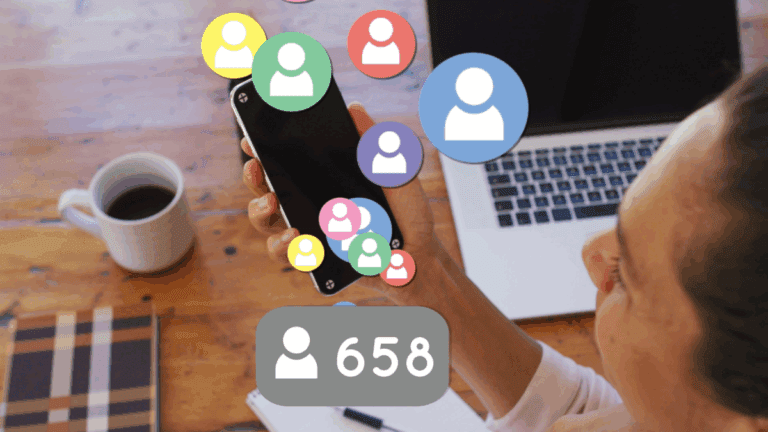
If you think influencer marketing was born when Instagram added the “ad” tag, buckle up. The idea of leveraging someone else’s credibility to sell a product is older than light bulbs — and the jumps from Victorian china to TikTok dances reveal exactly why today’s marketers keep chasing social media ROI.
1890‑1910 — Royal Seals & Patent Medicines
Long before the term influencer hit PowerPoint decks, brands paraded royal warrants. Queen Victoria lent her crest to everything from fine china to chocolate; British tabloids of the day were essentially early influencer marketing platforms. Sure, reach was limited to newspaper circulation, but the message — If it’s good enough for the Queen, it’s good enough for you — set the blueprint for modern brand awareness tactics.
1940‑1960 — Hollywood’s Golden Age
Enter television. Studios wrapped stars in product placements: Audrey Hepburn and Givenchy, James Dean with Triumph motorcycles. This era proved the power of overnight fame; one Tonight‑Show shout‑out could wipe out warehouse stock. What marketers didn’t have was measurement — they relied on Nielsen surveys and gut instinct, no spreadsheet insight into return on investment.
1980‑1999 — Supermodels, Sneakers & Soft‑Drink Wars
Celebrity endorsements went mainstream. Think Michael Jordan & Nike, Cindy Crawford sipping Pepsi. Two innovations changed the game:
- Logo integration (hello, swoosh).
- Multi‑channel roll‑out — TV, billboards, glossy mags all reinforced the same face.
Budgets were huge, but audience authenticity still wasn’t a metric. Brands basically bet on likeability and prayed.
2000‑2010 — Blogs Birth the “Everyday Expert”
DSL modems squealed and suddenly ordinary hobbyists had publishing power. Fashion, food and tech blogs sprouted banner ads and gifted product reviews. Early adopters noticed something wild: a blogger with 25 000 monthly readers could move more SKUs than a regional magazine. The cost per impression plummeted, ushering in the first whispers of measurable social media ROI.
2010‑2018 — Instagram Era: Filters, Flat‑Lays & Follow‑Fors
Once Instagram added photo filters, the blogosphere’s top voices migrated — and so did every major influencer marketing platform. Hashtag searches replaced Google, and micro influencers proved scaleable:
- Brands sent discount codes, tracked check‑out bumps in real time.
- Insights dashboards surfaced engagement rate and audience quality as the metrics that separated real influence from empty reach — read our full analysis here.
By 2018, #ad appeared in 2.5 million posts, and regulators forced transparency. For the first time, marketers could A/B test creative, spend, and placement the same way they did with display ads.
2019‑2021 — The TikTok Shock
Fifteen‑second vertical video flipped the funnel — trends were now crowd‑up, not brand‑down. Nanos and micros (under 10 k followers) could go viral overnight via the “For You” algorithm. Earned Media Value spiked as marketers realised a single stitch could out‑perform a six‑figure celebrity contract.
2022‑2025 — Welcome to the Performance Era
Current playbooks combine everything learned so far:
| Old Lesson | 2025 Upgrade |
|---|---|
| Trust sells | Authenticity audit (bot checks, sentiment) |
| Frequency matters | Always‑on UGC loops fuel paid ads |
| Celebrity = reach | Micro creators deliver lower CPA |
| You can’t measure buzz | Yes, you can — hello, dashboard attribution |
Brands now plug their creator roster into a live audience‑quality score, pipe UTMs into GA4 and treat influencers like a flexible media channel. Social media ROI sits on the same weekly report as PPC and email.

Key Takeaways for Today’s Marketer
- Old concept, new tech. Influencer marketing isn’t new; the toolset is.
- Micro beats macro for efficiency. Engagement trumps reach when budgets squeeze.
- Measurement is non‑negotiable. If you can’t tie a post to revenue, rethink the brief.
- Audience Quality > vanity metrics. Dive into authenticity checks before signing contracts.
Bookmark this timeline the next time someone calls influencer marketing a fad — it’s survived telegraphs, TV, and TikTok. Odds are good it’ll outlive our latest social‑media crush too.
Drafted with a mug of pour‑over, a stack of vintage ad cut‑outs, and more browser tabs than is healthy. Share it if you learned something — history only matters when it travels.



